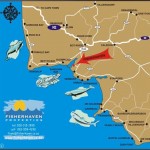Kleinmond Vlei Horses and Horses of the Anglo Boer War
- Jul
- 08
The obvious questions are: Where do the horses fit in and what future do they have?
- Ecologically the horses fit into the vlei like hands in gloves. Although much of the vlei is in private ownership, it is in effect treated as a nature reserve. Most nature reserves in South Africa carry a complement of large mammals. Horses are large mammals of the herbivorous kind like zebra, hippopotamus, rhinoceres, etc. They make excellent use of the abundance of grazing in the vlei and are virtually always in excellent condition. They tread footpaths through the ever more dense reedbeds thus opening up the necessary channels for drainage.
- Politically they have no competition from other large mammals because there are none in the vlei.
- Economically they threaten nobody’s grazing rights because there are no claims on the grazing rights.
- Over decades this group of horses and their ancestors have adapted themselves remarkably well to their marshy habitat. Like horses everywhere they grow thick winter coats which give adequate protection against the cold winter winds. In the middle of winter and well into Spring when the water levels are high before the outlet at Kleinmond opens up or is breached, they are forced out to the fringes of the vlei, but in all the years I have never observed them out in the open veld which run from the edge of the vlei to the fence next to the tarred road. They do of course venture out into the dunes between vlei and ocean but not often. They absolutely prefer the flat marshy area in the centre. It may be that they feel safer there.
- Other obvious adaptations are e.g. the big, saucer shaped hooves which is an adaptation to the soft, spongy surface. However, the hooves are most definitely not webbed, as one journalist had it. What is also remarkable is the soundness of the hooves and the limbs. On soft, sandy terrain, in other parts of the country horses’ hooves sometimes grow out too long and become grotesquely malformed. This is certainly not the case with these horses. Their hooves are perfectly shaped and apparently of sound texture, despite the soft and constantly wet underfoot conditions.
- They have interesting grazing habits and their choice of diet must be excellent for them to remain in such good physical condition. They are often seen grazing in the shallow water, pushing the muzzle down under the surface to pull up and ingest mouthsful of water grass. But they also of course take the kweek and buffelsgras and even some of the edible shrubs as well as lots of fluitjiesriet on the sides and in the reed beds.
- In social behaviour they conform to what is known about free roaming horses. The three mature and two juvenile stallions exactly know their respective places in the pecking order. One of the older stallions has for years been the constant companion of one of the older mares, which has never had a foal. So one of these two must be infertile. When a mare is on heat the younger stallions will challenge and if it is the first heat after foaling, the young foal is in danger of being kicked or trampled.
Recent Posts
- The Pros And Cons Of Solar Power
- 3 Things Private Sellers Wish they Knew (That Estate Agents Do!)
- Top 5 Tips For Sellers in a Buyers’ Market
- Top 5 Tips For Buyers In A Buyers’ Market
- Your Property Title Deed – A Short History
Contact Us
Fisherhaven Properties
Frans Theunissen
Tel: 082 559 4290
Tel: 028 315 1990
Fax: 086 660 4823
info@fisherhaven.co.za

Please ask us about long-term property rentals in the area.


